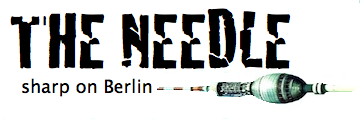Weekend Trip to Südtirol: Going to the Sun, by Train
It’s midwinter in Berlin and a pretty mild one. But a grey sheet is still suspended between us and the sun. Where do we find its edge? When does the sun come back? I have tried many ways to get away in winter. To get out of Berlin in the bad months, which I reckon are from November to March, excepting December because of the holiday mood. But it’s not easy. To my mind: the Canaries are too commercial, a cauldron of bad tourism. The Mediterranean is too cold, no insulation so at night you freeze. Flying farther afield is less attractive in times of climate change.

So, I thought: maybe I am going about this the wrong way. Maybe I should be going up instead of South. We should pierce the clouds. Actually, I don’t need it to be warm. I just really need direct sunlight on my face. Simple needs, simple solution: the Alps by train.
Berlin to Munich is now high-speed (4 hours) and to the Brenner Pass (Italian border) another 2.5 hours. Discounted rail tickets (the Europa-Spezial tickets on Deutsche Bahn) actually mean that you can get to Bolzano for about 45 EUR one way or even less. I like trains. I like looking at landscape, especially the Alps knee deep in snow. It’s no hardship to spend a few hours rolling: I certainly prefer it to being stuck in airport security.
Südtirol (or Alto Adige, in Italian), a bilingual region on the border with Austria, is the sunniest place in the Alps. It grows wonderful wine (Lagrein…!), sunlight grows smiling people, and you can go between delectable food and tobogganing and the sauna. You can ski but you don’t have to. It’s a cure for February blues.
A few photos tell the story rather better:
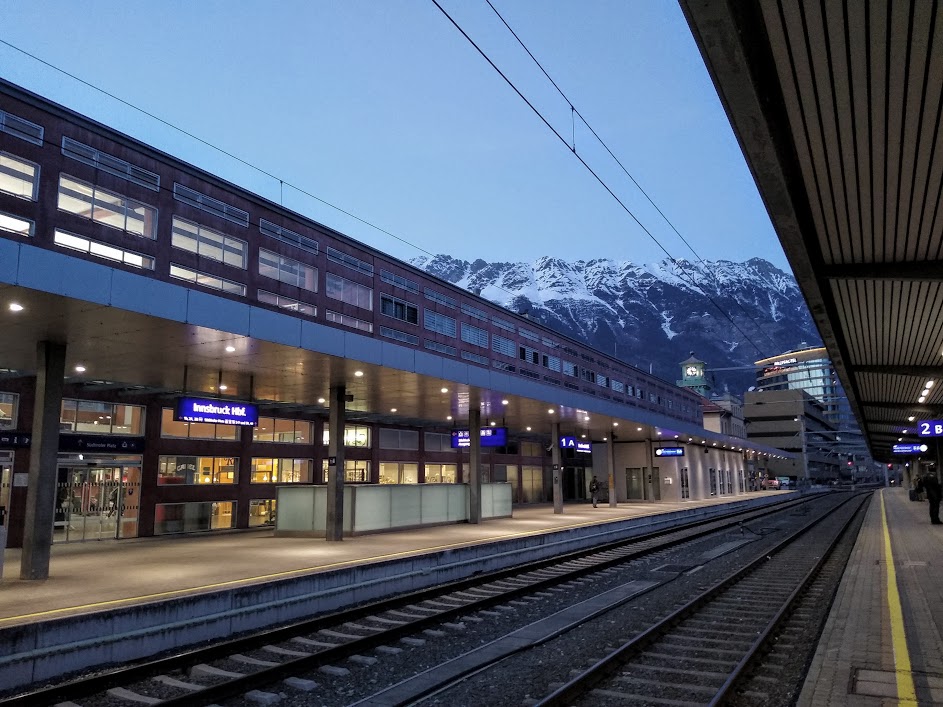
The train from Munich passes through Innsbruck in Austria before chugging up to the Brenner Pass. After World War One, the Tirol south of this watershed passed from the Habsburgs to Italy. Bilingual Bolzano (Bozen), the region’s main city (105 000 people), is an intriguing mix of Alpine architecture, Spritz bars, and piazza culture. Best of both worlds.
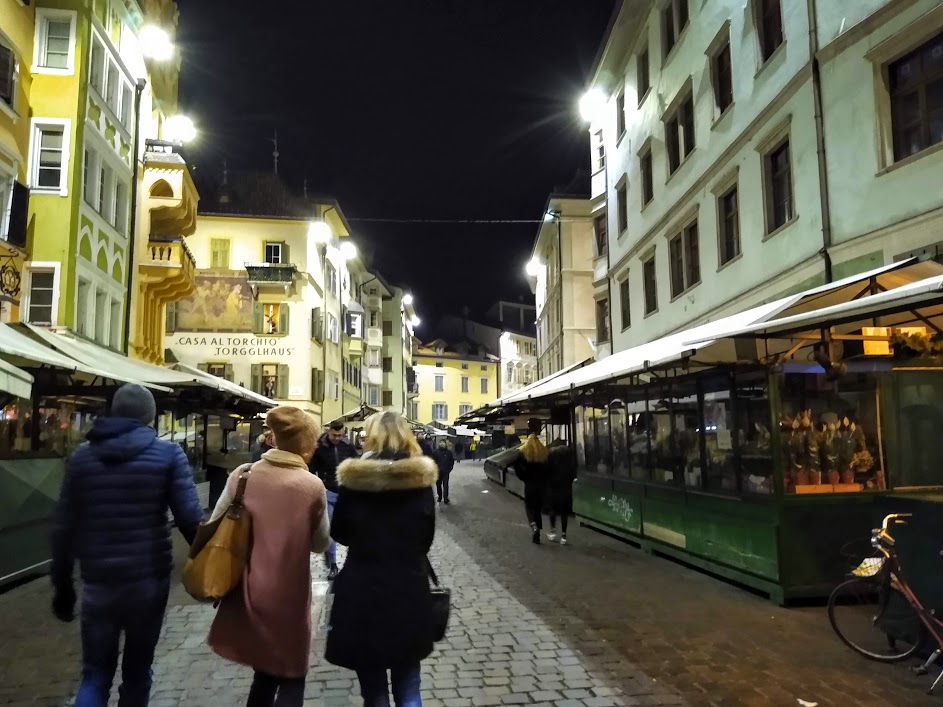
And the cuisine is stunning: Italian know-how of ingredients applied to Central European dishes in elegant wood-panelled dining rooms. Try a tagliere of local speck, a Goulash, or Canederli which––so delicate––are an inspired version of the dumpling. These ones, that we had at Restaurant Vögele, are sweet, filled with molten chocolate, and served with pear.
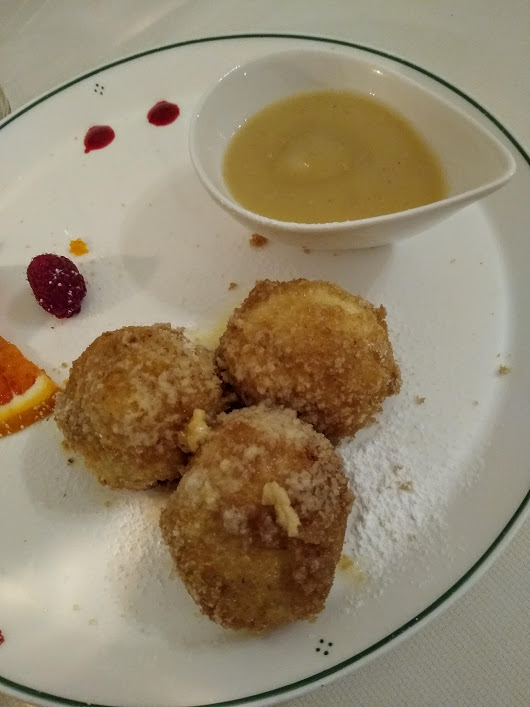
I loved the mix of Italian and German voices (a lilting dialect) in the dining room and not knowing what language to speak to the waiter, who would code-shift, moving effortlessly from one to the next. There’s an openness to being on this linguistic fault-line.
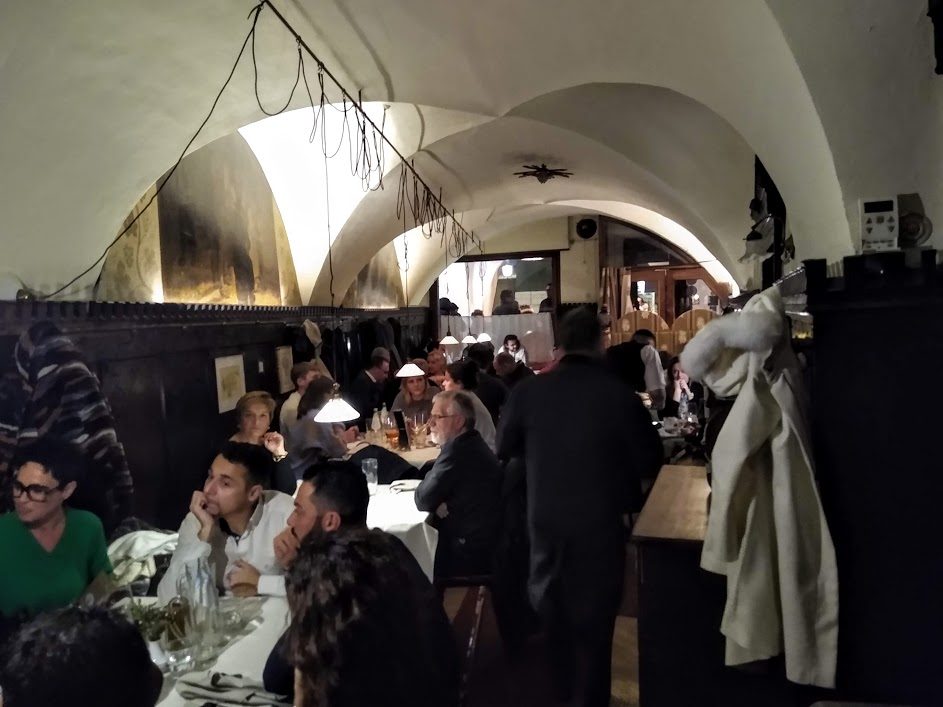
Maybe not right before or after you eat, you can visit Ötzi, the five-thousand year old Mummy dragged out of a Südtirol glacier. His prosciutto-like body is on display at the South Tyrol Museum of Archaeology in an enormous fridge. I probably shouldn’t have put this photo directly after the last one: Ötzi makes one’s stomach turn. Here there’s a mix of fascination and the grotesque. You will probably be intrigued by how he was discovered and the murder mystery surrounding his demise. Remarkably, even his clothes and belongings survived the millennia and are also on display.
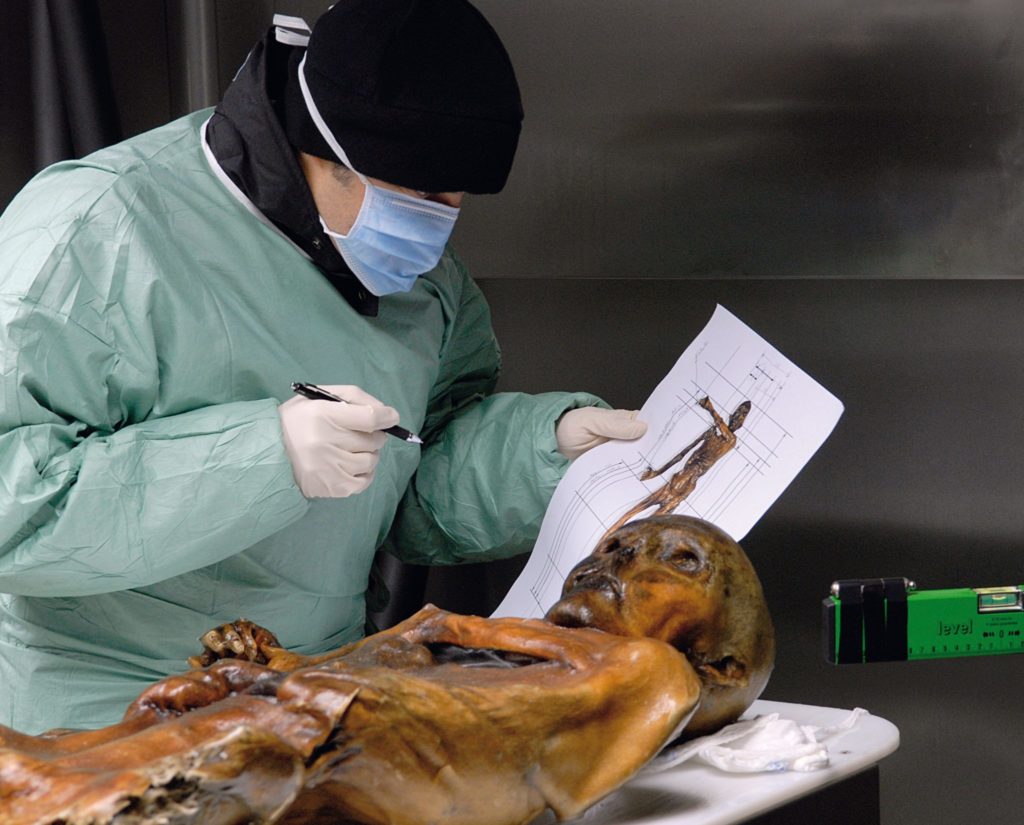
In Bolzano, you can also take a cable car up the Renon mountain or head north a half-hour (by bus) to the Habsburg spa town of Merano (Meran), frequented by the likes of Kafka. Those taking the ‘cure’ would take river walks and bathe in healing waters.
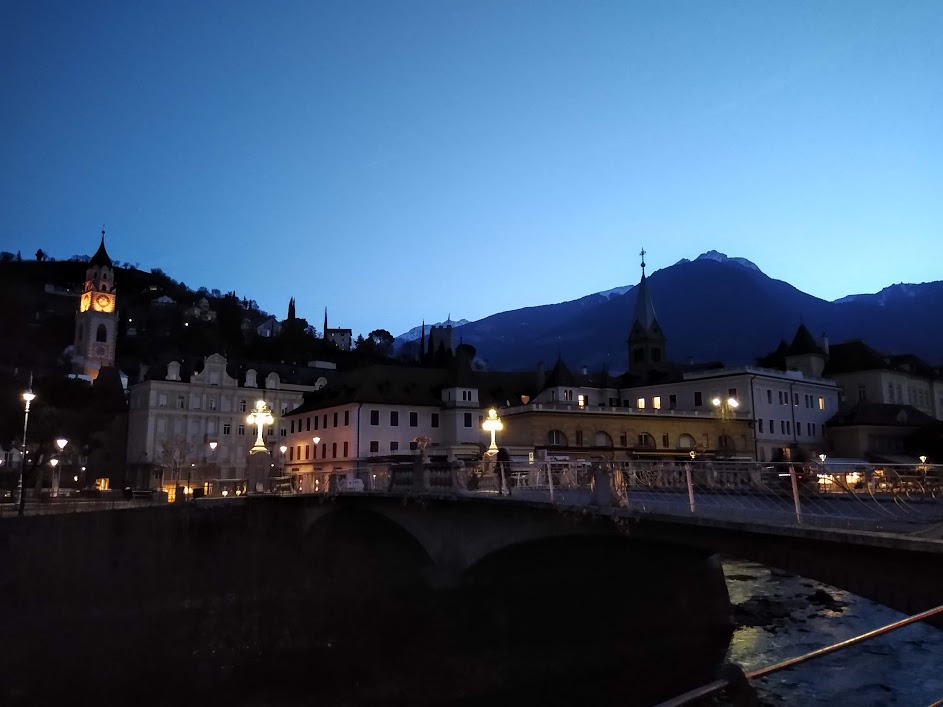
The enormous thermal baths, located in the centre of town (about a 15 minute walk from the station), were crazy busy on a Sunday, but luckily were open until 10pm. After dinner, the crowds move out and we could enjoy the 37 C waters with fewer people and, paying extra, the mixed textile-free sauna section with snow room, outdoor pools, and a bilingual Aufguß. You’ll probably want to get back to Bolzano after you’re done: Merano was creepy-quiet at night, not a person on the street!
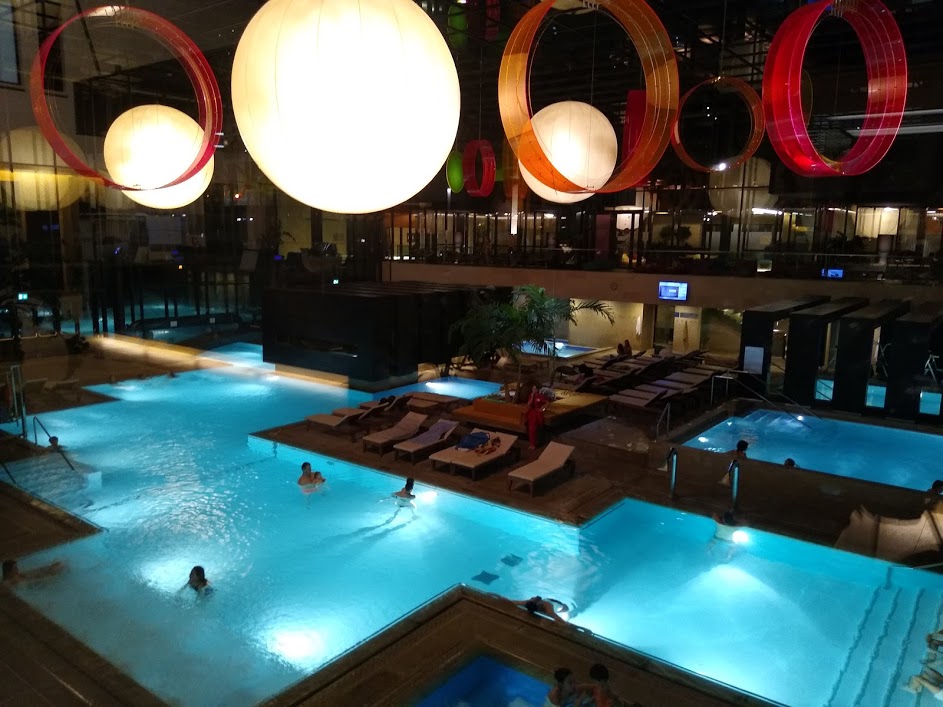
I might mention breakfast before jumping the train back North. Bolzano’s Bar Laurin (in the eponymous hotel), with its Art Nouveau (1911) cycle of frescoes and comfy chairs, has that old-world hum about it that find rarely in Berlin––maybe at the Stammhaus of Café Einstein or in a shabbier way at Diener Tattensaal.
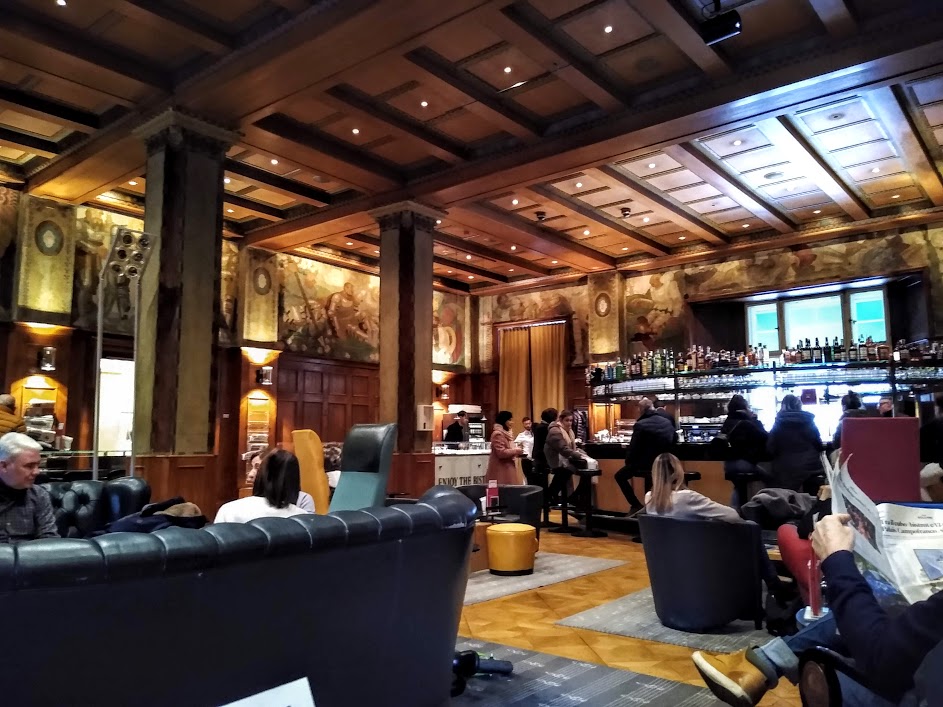
Sitting in Bar Laurin, we thought about where the centre of Europe might be. We thought it was plausibly this bar, located in a city at the border between the Mediterranean and the North, between Latin and Germanic, and recognisable to those farther East who were also under the Habsburgs. Perhaps. It’s an elegant but old-fashioned, even musty, place, but you can sink deeply into its chairs and the coffee is so good.

I came for the sun but spent most of my time eating and drinking and soaking. And after three days I felt much more prepared to confront the twilight of Berlin. It might be the February cure you are looking for too.
